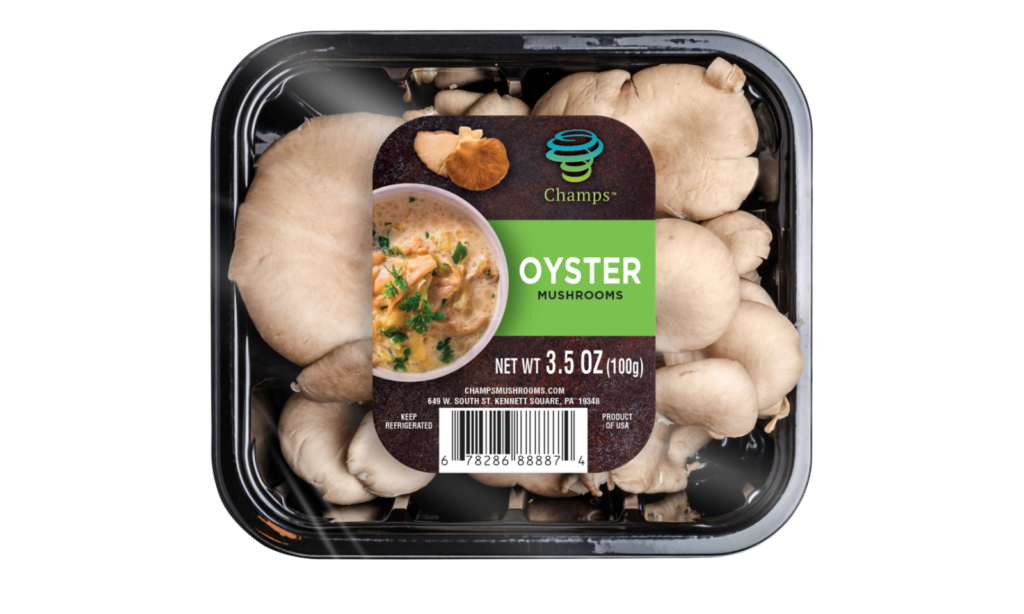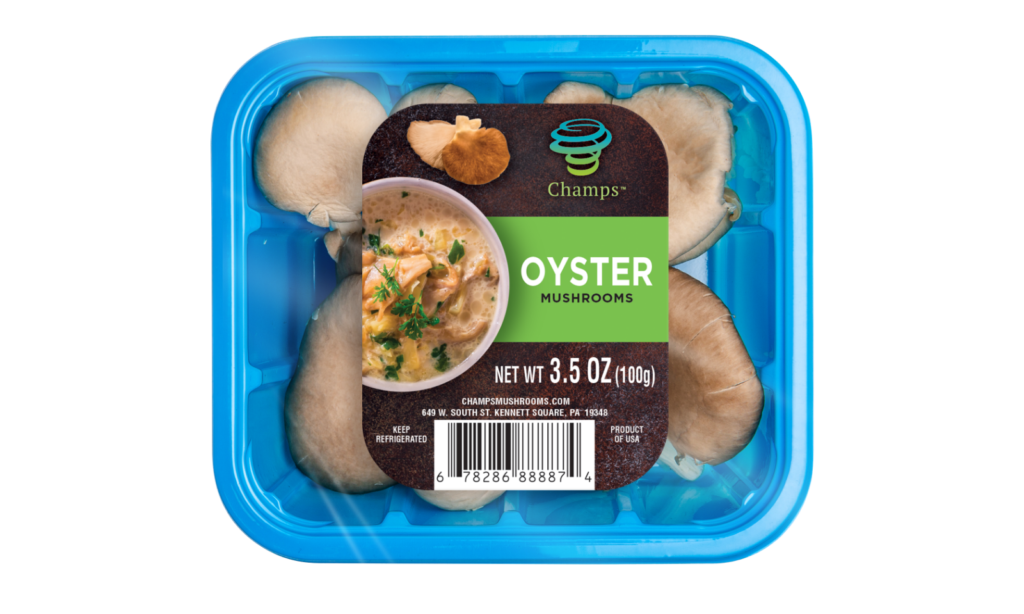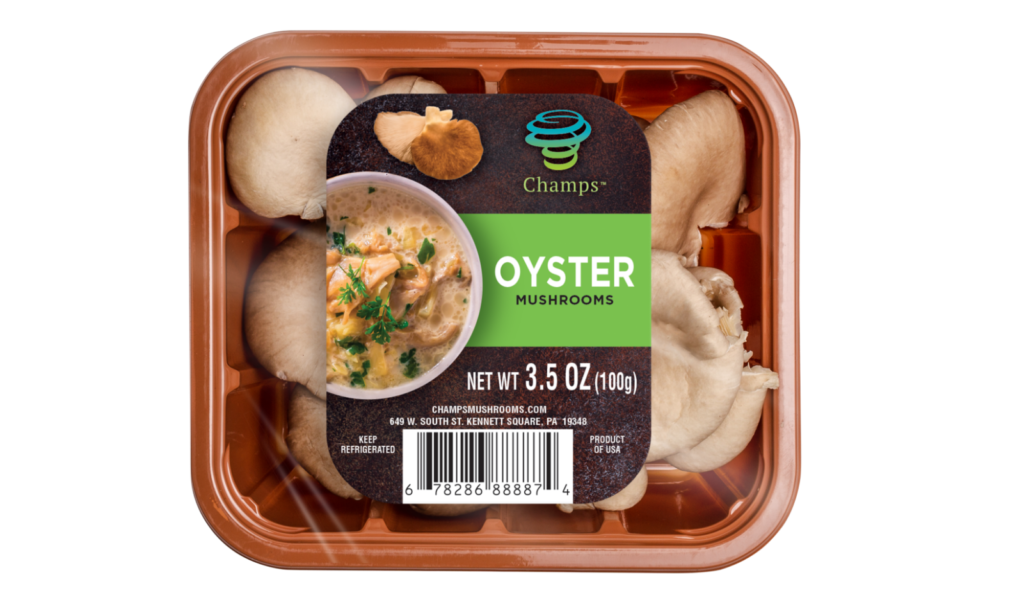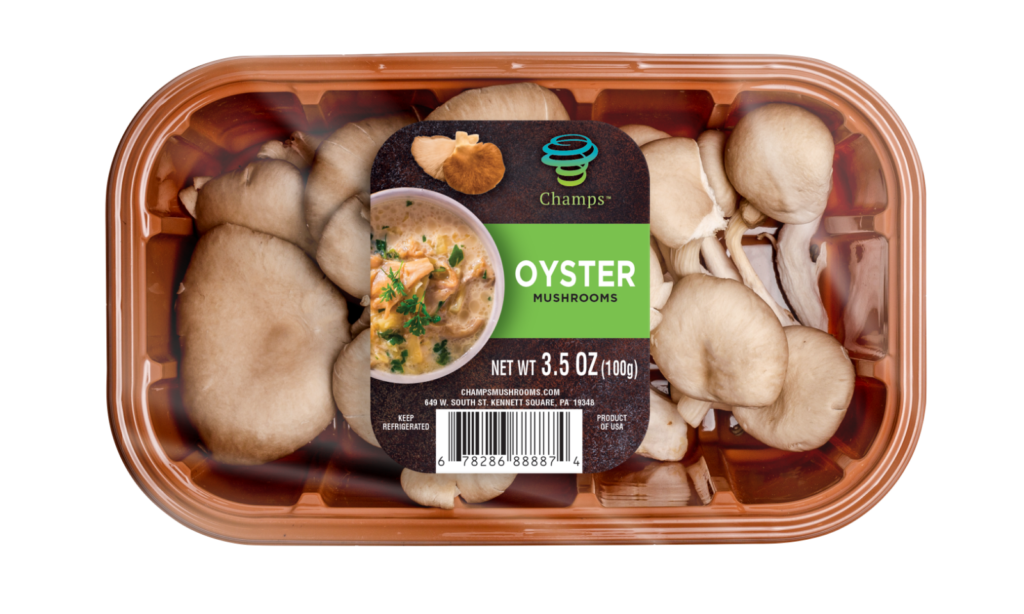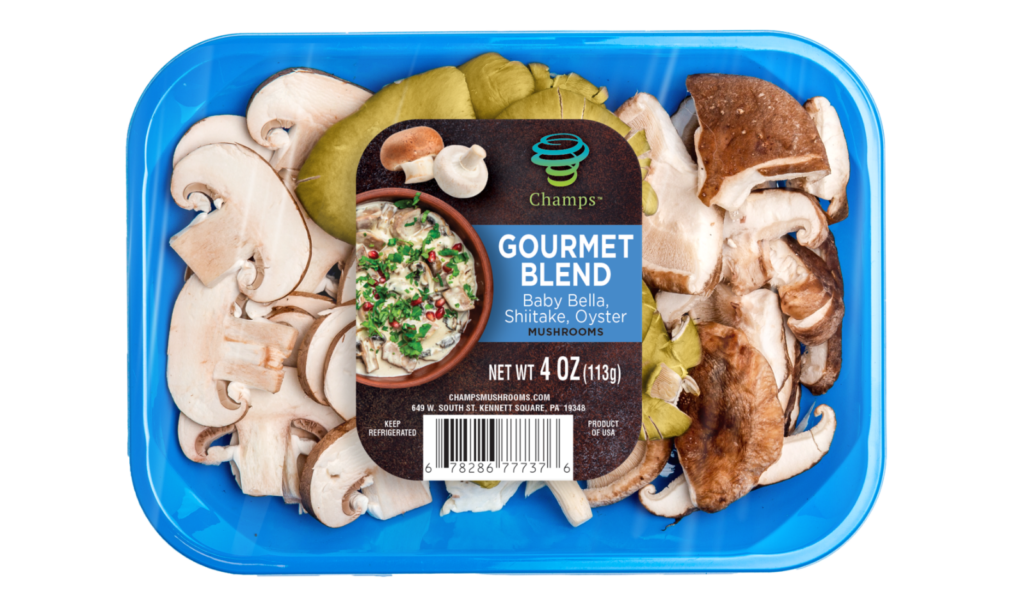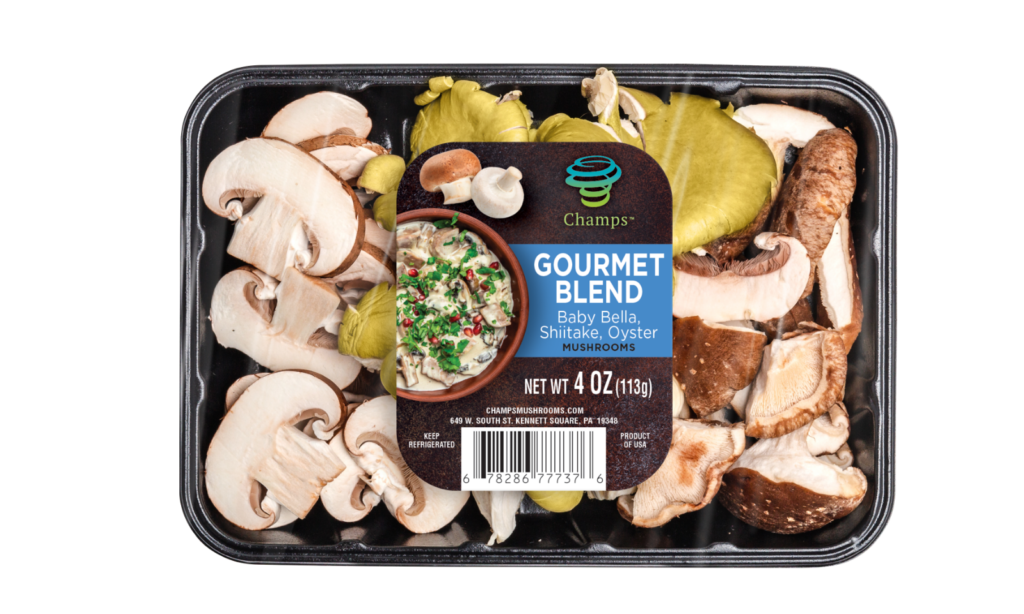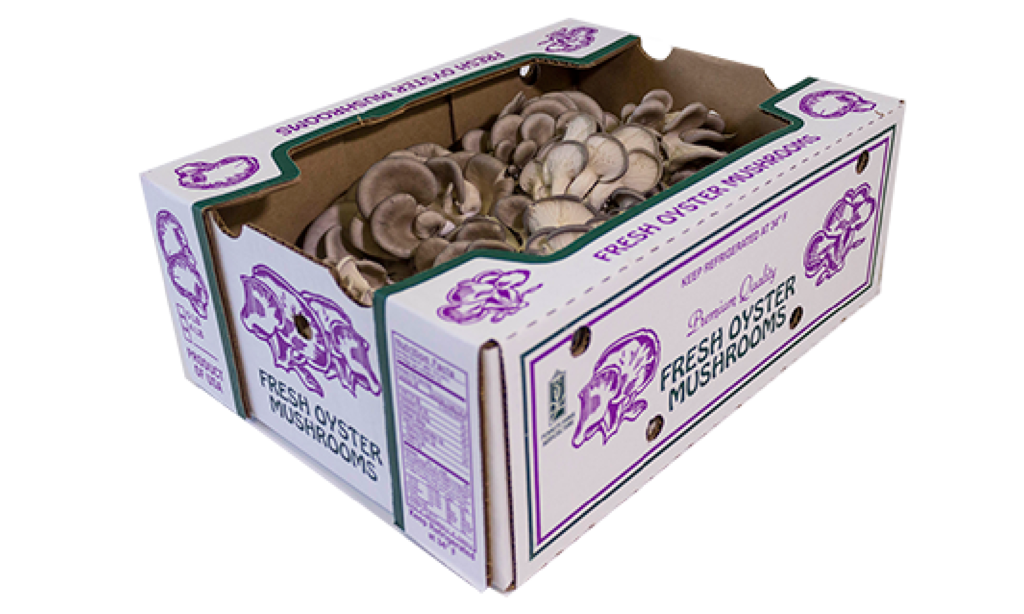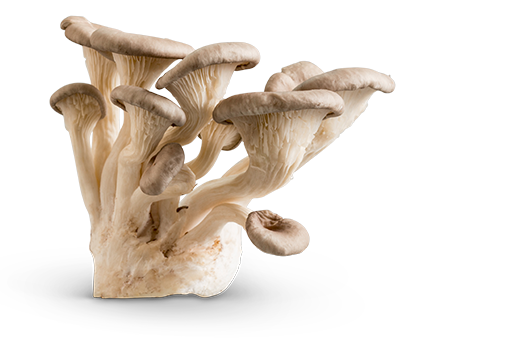
Oyster Mushrooms
Without a doubt, the oyster mushroom ranks as one of the most beautiful edible mushroom varieties. The name oyster mushroom, or Pleurotus ostreatus, comes from the oyster-shaped cap that covers beautiful gills that outstretch from a central stem. They might be intricate-looking, but they are easy to prepare. Their delicate, velvety texture and mild, woodsy flavor make them the perfect pairing for chicken, veal, pork and seafood. Enjoy oyster mushrooms sautéed, fried, baked or battered.
While grey, brown and white oyster mushrooms might be the most common colors available at the supermarket, these stunning mushrooms can also be blue, pink and yellow.
Oyster mushrooms will usually stay fresh for up to 7 days in the refrigerator in original packaging or a brown paper bag. Before use, simply trim away any substrate that might be at the base of the stem and pull it apart. Wipe with a damp paper towel or quickly rinse under cold water.

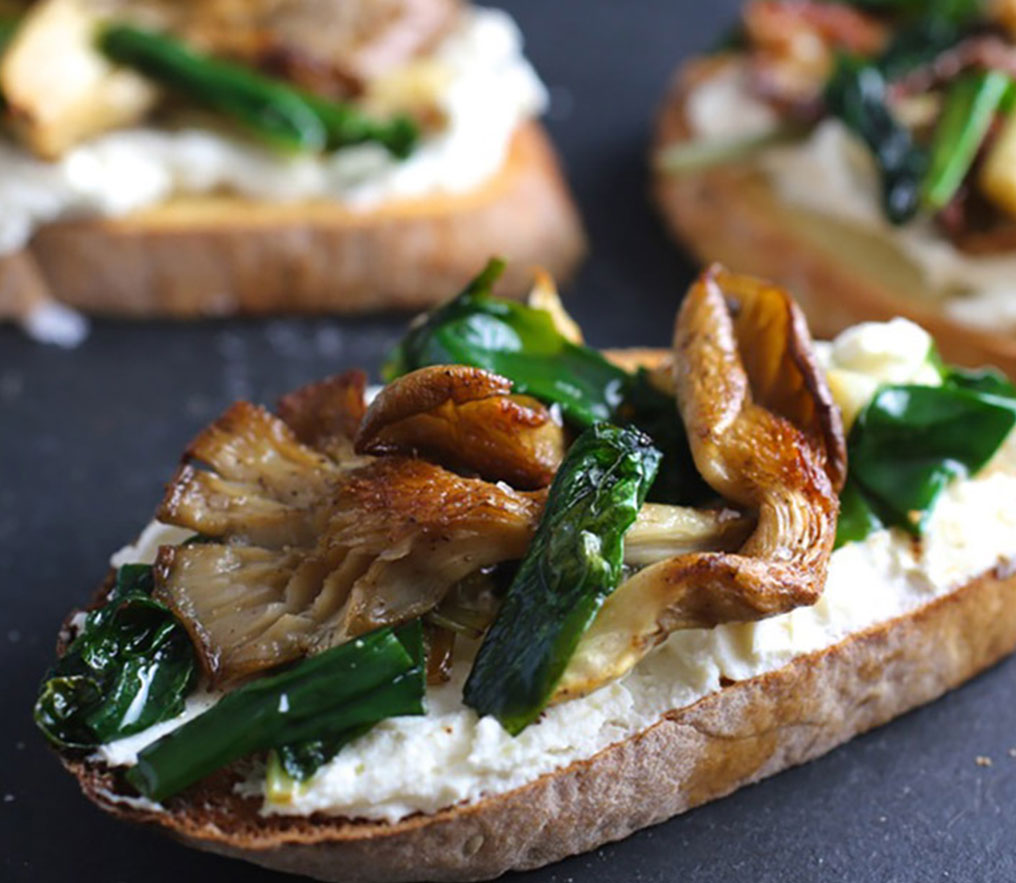
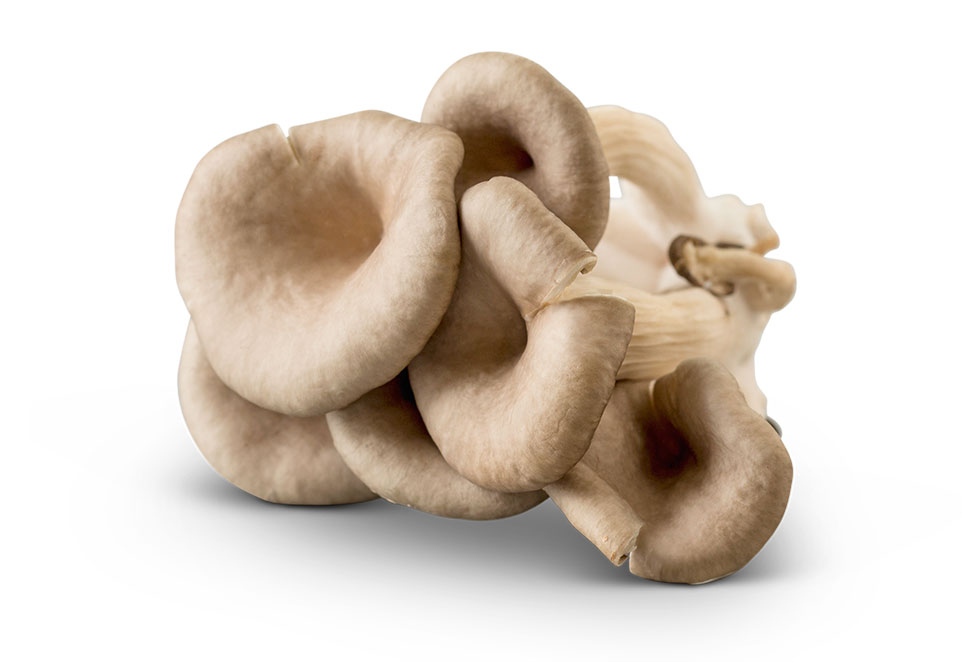

The Benefits
of Oyster Mushrooms
Oyster mushrooms remain an excellent complement to a gluten-free diet, support a healthy lifestyle, and are a low-calorie option.
Oyster Mushroom Nutritional Profile
Oyster mushrooms aren’t just another beautiful face in the crowd, they offer up many nutritional benefits and contain important vitamins and minerals. One (100 g) serving contains:
- 33 Calories
- 6 Grams of Carbohydrates
- 3.3 Grams of Protein
- 2.3 Grams of Dietary Fiber
- 0 Grams of Fat
- 29 IU of Vitamin D
- 0 Milligrams Cholesterol
- 1 Gram of Sugar
- Gluten-Free
One serving (100 g or 6 small oyster mushrooms) is a good source of niacin (35%), copper (26%), riboflavin (26%), and pantothenic acid (25%). They also have folate (9%), potassium (8%), and iron (7%).
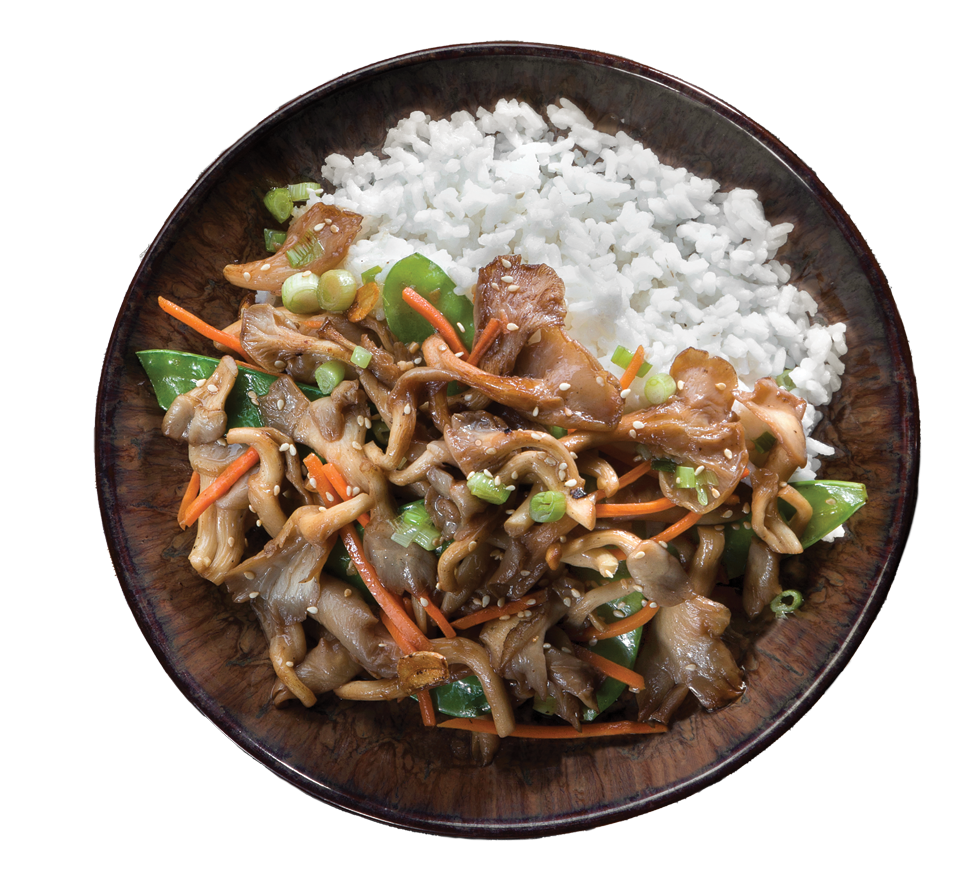
Culinary
Applications
Oyster mushrooms have become a fan favorite of chefs and foodies due to their exotic appearance and umami flavor. They can easily be integrated into salads, soups, sauces, and stir-fries.
Here are some exciting and delicious ways to use oyster mushrooms.
- Sautéed in butter and garlic and served over chicken, seafood or steak
- Roasted as a side dish
- Simmered in soups and stews
- Stir-fried in Asian recipes
- Sautéed in vegetarian recipes
- Shredded and used as a vegetarian “pulled meat”
- Served in pastas
- Battered and deep fried
The light flavor makes them a wonderfully subtle complement to wide-reaching dishes.


